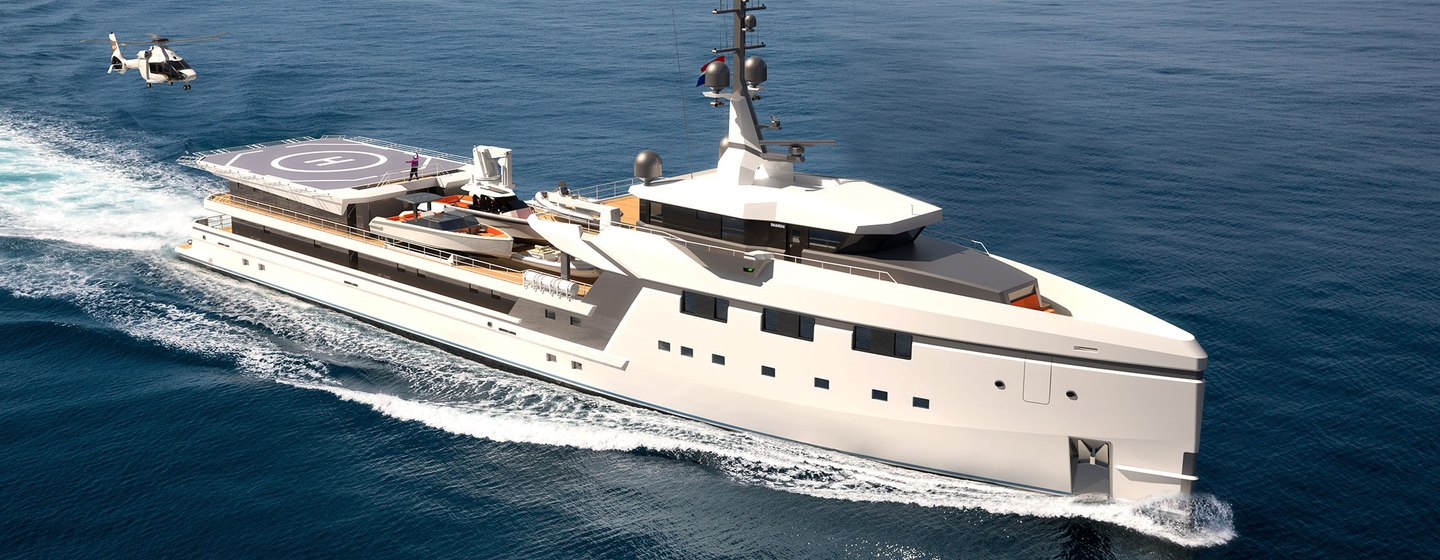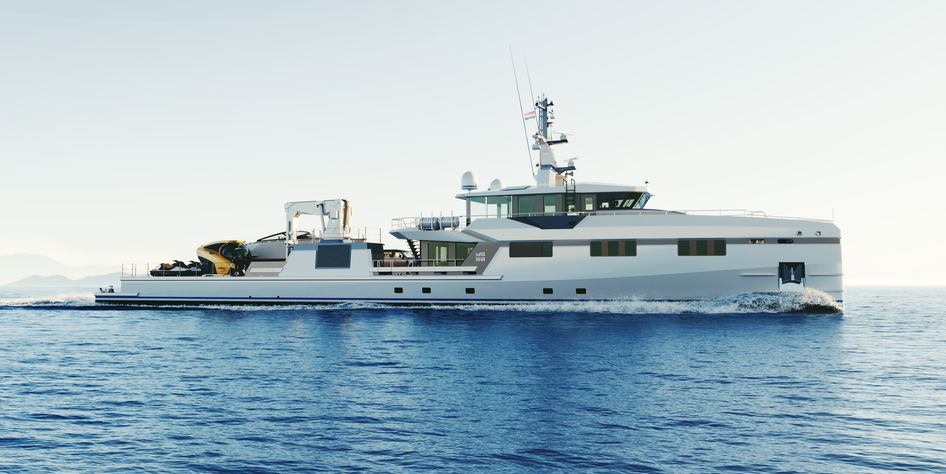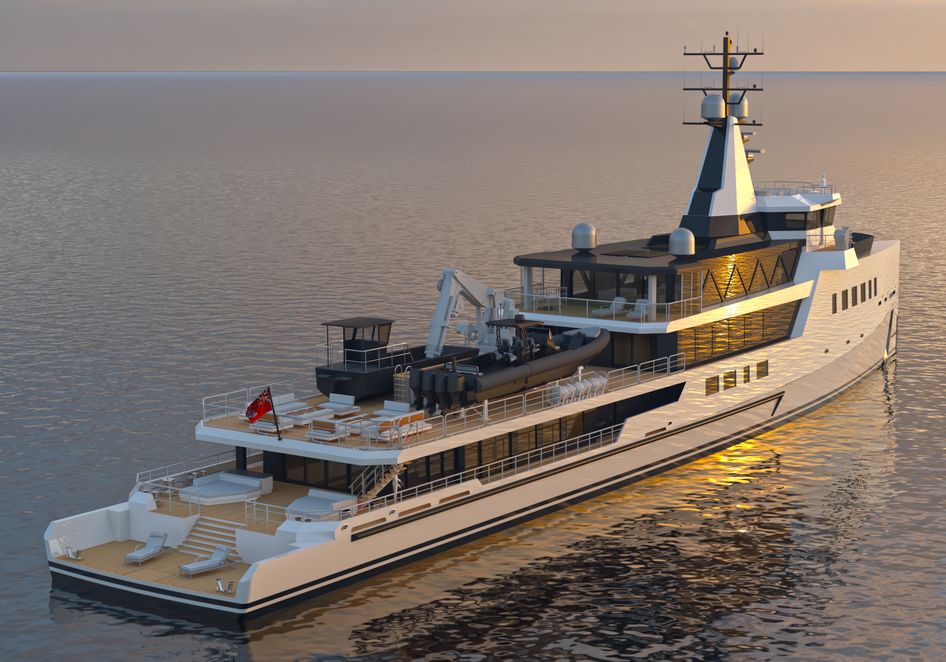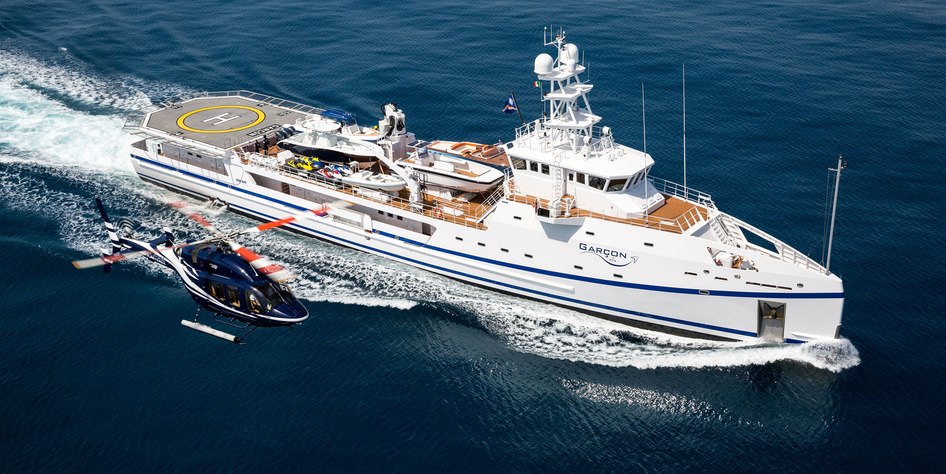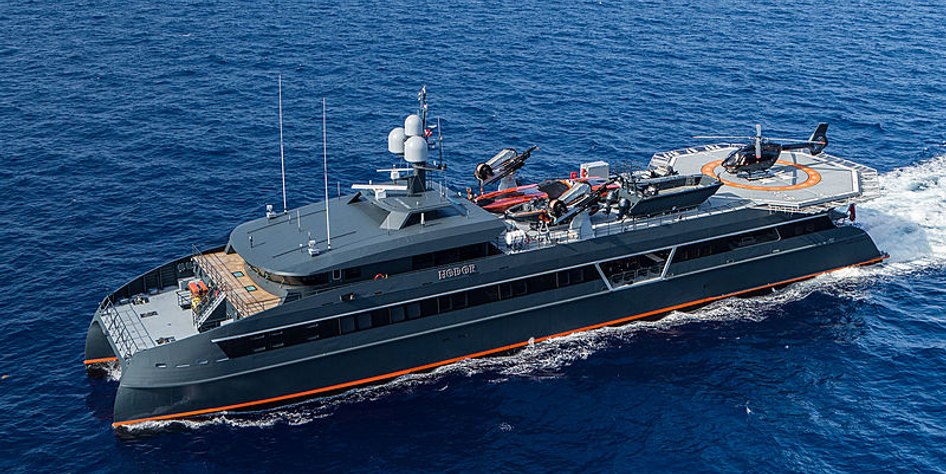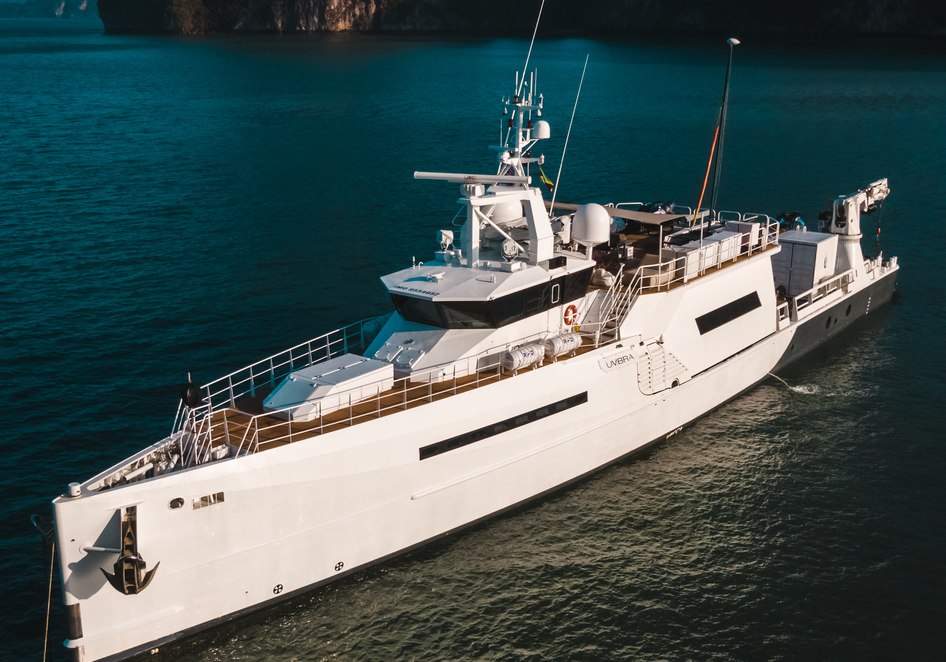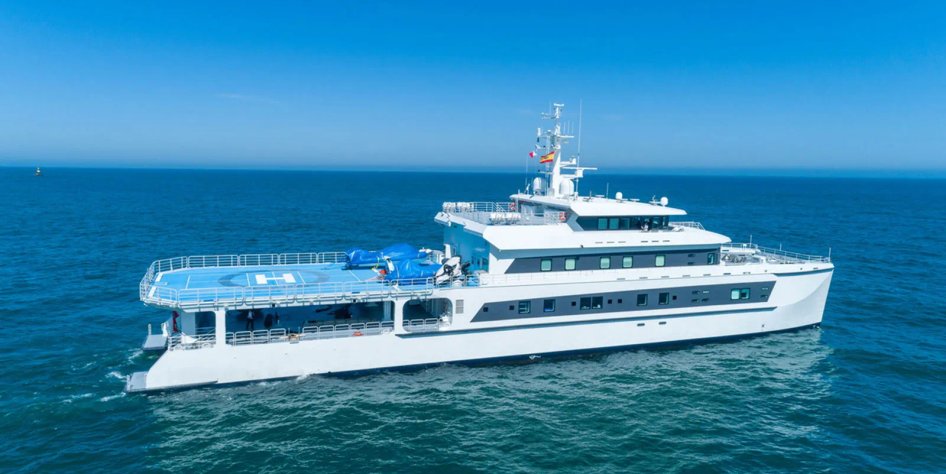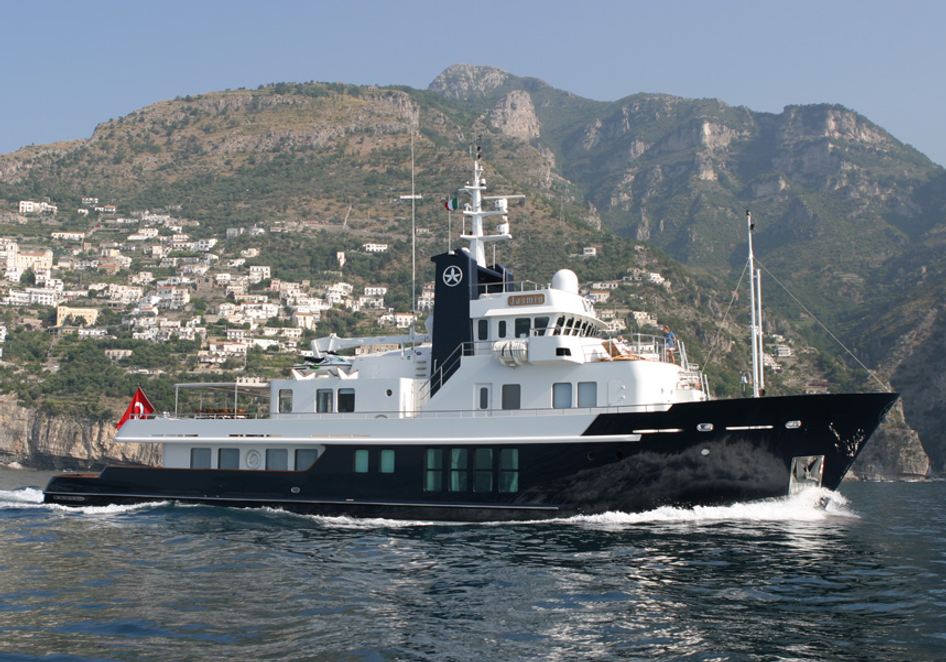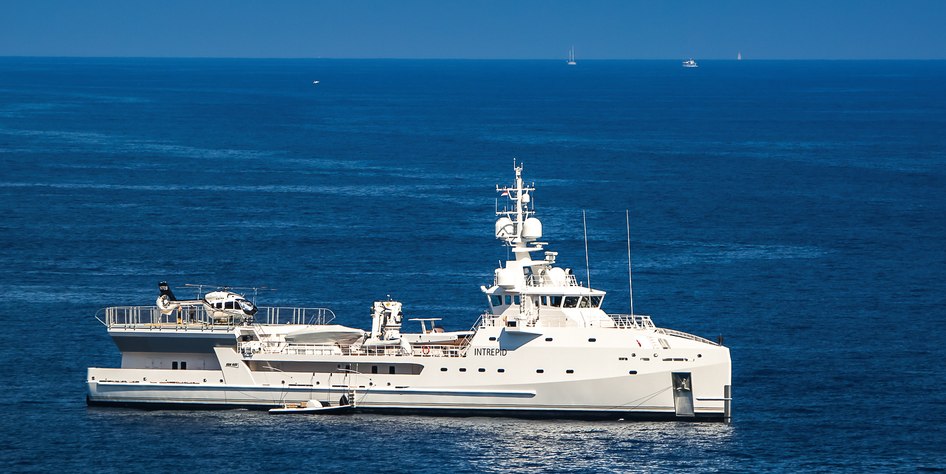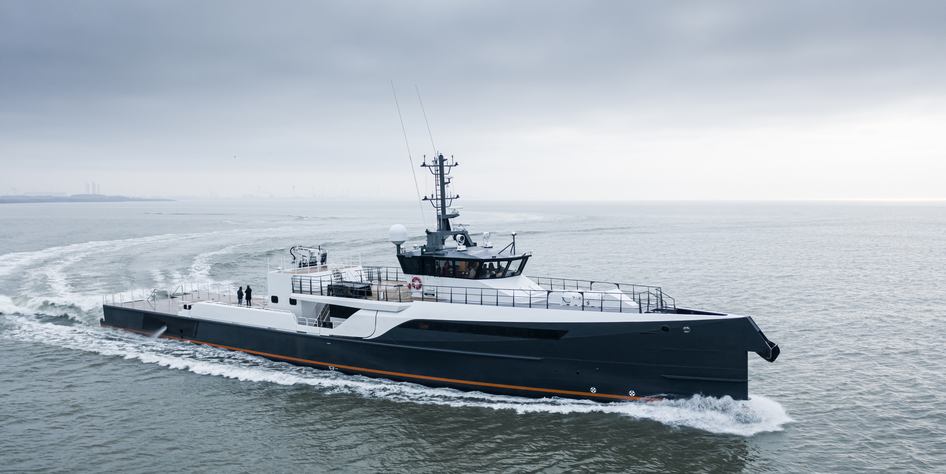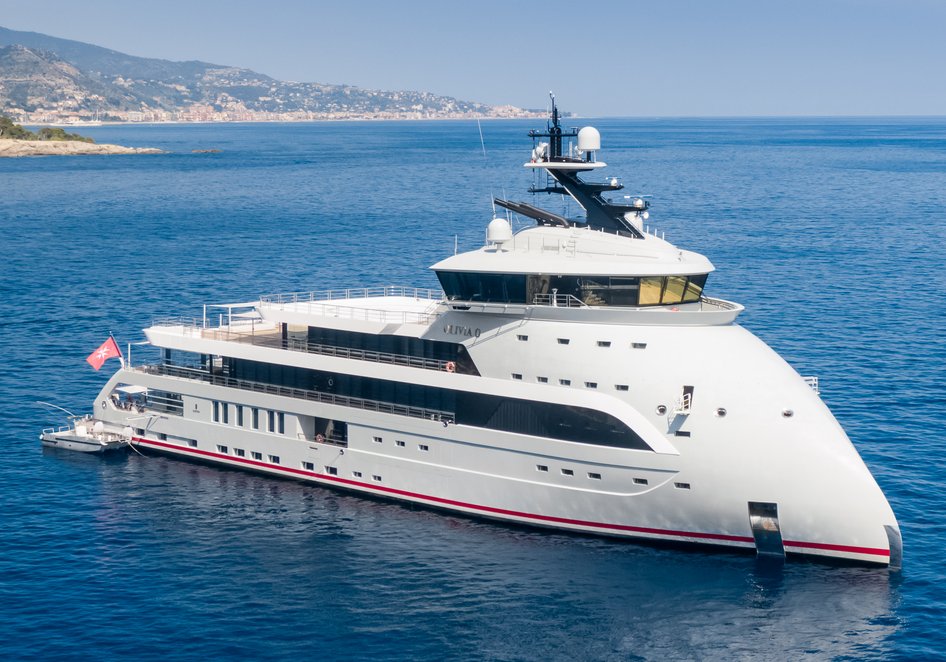Designed to follow and enhance the capabilities of luxury yachts, yacht support vessels (sometimes called shadow boats or chase boats) carry everything from speedboats and seaplanes to diving gear and additional crew. As superyachts grow in size and complexity, so too do their support ships — often rivaling mid-sized naval vessels in capability. In this article, we dive into the biggest and most advanced support yachts currently sailing the seas.
What Are Yacht Support Vessels?
Yacht support vessels (YSVs) are specialized ships designed to accompany superyachts and provide essential services, storage, and operational support. These vessels serve as floating bases for helicopters, submarines, tenders, water sports equipment, and additional crew quarters, effectively extending the capabilities of luxury yachts. Here's an introduction to yacht support vessel types:
| Support Vessel Type | Primary Function | Common Features |
|---|---|---|
| Toy Carrier | Transports tenders, jet skis, submarines, and water toys | Large garages, cranes, storage decks, fueling stations |
| Heli Support Vessel | Provides aviation support for helicopters | Helipads, hangars, refueling systems, flight crew quarters |
| Crew Support Vessel | Accommodates additional crew and staff | Sleeping quarters, kitchens, workshops, laundry facilities |
| Expedition Support Vessel | Supports remote or long-range exploration missions | Cold storage, dive centers, labs, extra fuel and provisions |
| Rescue & Safety Support | Enhances safety and emergency readiness | Medical bay, fast-response tenders, satellite comms, recovery gear |
- What Are Yacht Support Vessels?
- What Is a Shadow Vessel in Yachting?
- What Is a Helicopter Support Vessel in Yachting?
- What Is a Submarine Support Vessel and How Does It Work?
- What Is a Tender Support Vessel and Why Is It Useful?
- What Is an Expedition Support Vessel and What Makes It Unique?
- 10 Largest Yacht Support Vessels in the World
- Support Vessel Classification by Size and Capability
- What Are Specialized Yacht Support Vessels and How Do They Work?
- Construction and Design Considerations for Yacht Support Vessels
- Regulatory and Compliance Considerations for Yacht Support Vessels
- Yacht Support Vessel ROI & Economic Considerations
- Final Thoughts
World's Largest Support Vessels
What Is a Shadow Vessel in Yachting?
Curious about what a shadow vessel does for a superyacht? Shadow vessels — also called logistics support vessels or chase boats — are specially designed to trail behind a primary yacht, offering vital support during long-range voyages. Think of them as the ultimate sidekick: they carry everything that doesn’t fit (or shouldn’t be stored) on the main yacht — from spare parts to helicopters.
These vessels are particularly valuable for large superyachts that travel long distances or require advanced logistical support. They help owners maximize luxury and comfort aboard the mothership by offloading space-consuming systems and gear to the support vessel.
Shadow Vessels at a Glance
| Feature | Description |
|---|---|
| Definition | Vessels that accompany a superyacht to provide logistical support such as fuel, equipment, and crew housing |
| Key Functions | - Cargo and equipment transport - Fuel storage and transfer - Crew and guest overflow housing - Workshop and repair support - Emergency backup systems |
| Typical Size | 40–85 meters (131–279 feet) |
| Primary Users | Superyachts 80+ meters operating on global or extended voyages |
| Notable Examples | Garçon (85m) – One of the world’s largest support vessels Hodor (75m) – Carries subs, helis, and toys Umbra (63m) – Explorer-style shadow boat |
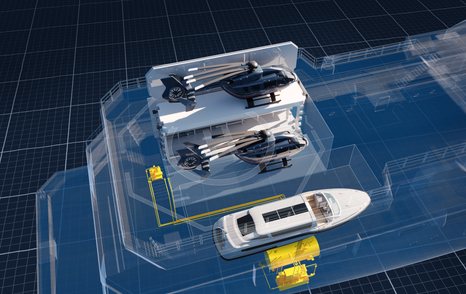
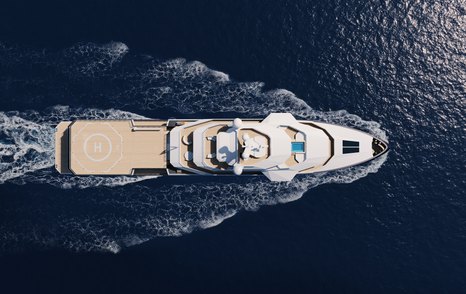
What Is a Helicopter Support Vessel in Yachting?
Wondering how superyachts handle helicopter operations safely and efficiently? That’s where helicopter support vessels come in. These specialized ships are designed to manage all aspects of aviation support at sea — from landing and storage to refueling and flight planning.
Instead of using valuable space on the mothership, helicopter support vessels provide a dedicated, secure platform for aviation operations, especially useful on long-range voyages or in expedition zones.
Helicopter Support Vessel Overview
| Category | Details |
|---|---|
| Definition | Support vessels built specifically for helicopter operations alongside a superyacht |
| Key Features | - Certified helidecks (15–25m diameter) - Enclosed helicopter hangars - Aviation fuel tanks (10,000–50,000L) - Maintenance areas and flight planning rooms - Specialized crew quarters for pilots and aviation staff |
| Operational Benefits | - Protects helicopters during rough seas - Increases flight readiness and safety - Frees up space on the primary yacht - Supports multiple helicopter types/configurations |
| Typical Range | 3,000–5,000 nautical miles (depending on size and load) |
| Use Cases | - Expeditions to remote areas - VIP transport without landing on the main yacht - Film production or rescue operations at sea |
What Is a Submarine Support Vessel and How Does It Work?
Wondering how superyachts deploy submarines safely and efficiently? Submarine support vessels are highly specialized platforms designed to handle the launch, recovery, and maintenance of submersibles used for exploration, research, tourism, and adventure.
Submarine support vessels come equipped with advanced dive systems, pressurized environments, and underwater communication tools to ensure the safe deployment of submarines and remotely operated vehicles (ROVs).
Whether supporting personal submersibles, scientific research craft, or mini-tourist subs, these support ships provide critical safety infrastructure like decompression chambers, hyperbaric treatment rooms, and emergency life support systems. Purpose-built quarters in submarine support vessels also house dive teams, technicians, and medical personnel to ensure smooth and secure undersea operations.
Submarine Support Vessel Overview
| Category | Details |
|---|---|
| Primary Function | Supports launch, recovery, and maintenance of submersibles |
| Technical Requirements | - Sub launch and recovery systems - Decompression chambers - Pressurized dive storage - Underwater comms - Dive crew quarters |
| Supported Submersible Types | - Tourist subs (10–20 pax) - Research submersibles (2–6 pax) - Personal submarines (1–3 pax) - ROVs (Remotely Operated Vehicles) |
| Safety Features | - Emergency life support - Hyperbaric treatment facilities - Specialized medical bays - Underwater rescue capability |
What Is a Tender Support Vessel and Why Is It Useful?
Ever wonder how superyachts carry all those tenders, jet skis, and water toys? That’s the job of a tender support vessel — a dedicated ship that transports and maintains a fleet of watercraft and recreational gear for a luxury yacht.
Tender support vessels serve as floating garages, packed with launching systems, dive equipment, beach setup gear, and space for multiple tenders, from sleek RIBs to sail-powered dinghies. With onboard cranes, ramps, and floating docks, tender support vessels make it easy to launch watercraft quickly and safely — even in remote anchorages. They’re essential for yacht owners who want maximum flexibility and fun, without cluttering the main deck.
Tender Support Vessel Overview
| Category | Details |
|---|---|
| Definition | Dedicated vessels that carry, deploy, and maintain tenders and water toys for superyachts |
| Storage Capabilities | - Multiple tender garages with lift systems - Dive gear and compressors - Jet ski and PWC racks - Water sports and beach setup storage - Onboard workshops for repairs |
| Typical Tender Capacity | - 4–12 tenders of various sizes - Jet skis, sailing dinghies, catamarans - Wakeboards, SUPs, seabobs, inflatables |
| Launch Systems | - Stern ramps for large tenders - Side-launch rollers or cranes - Overhead gantry cranes - Floating dock platforms |
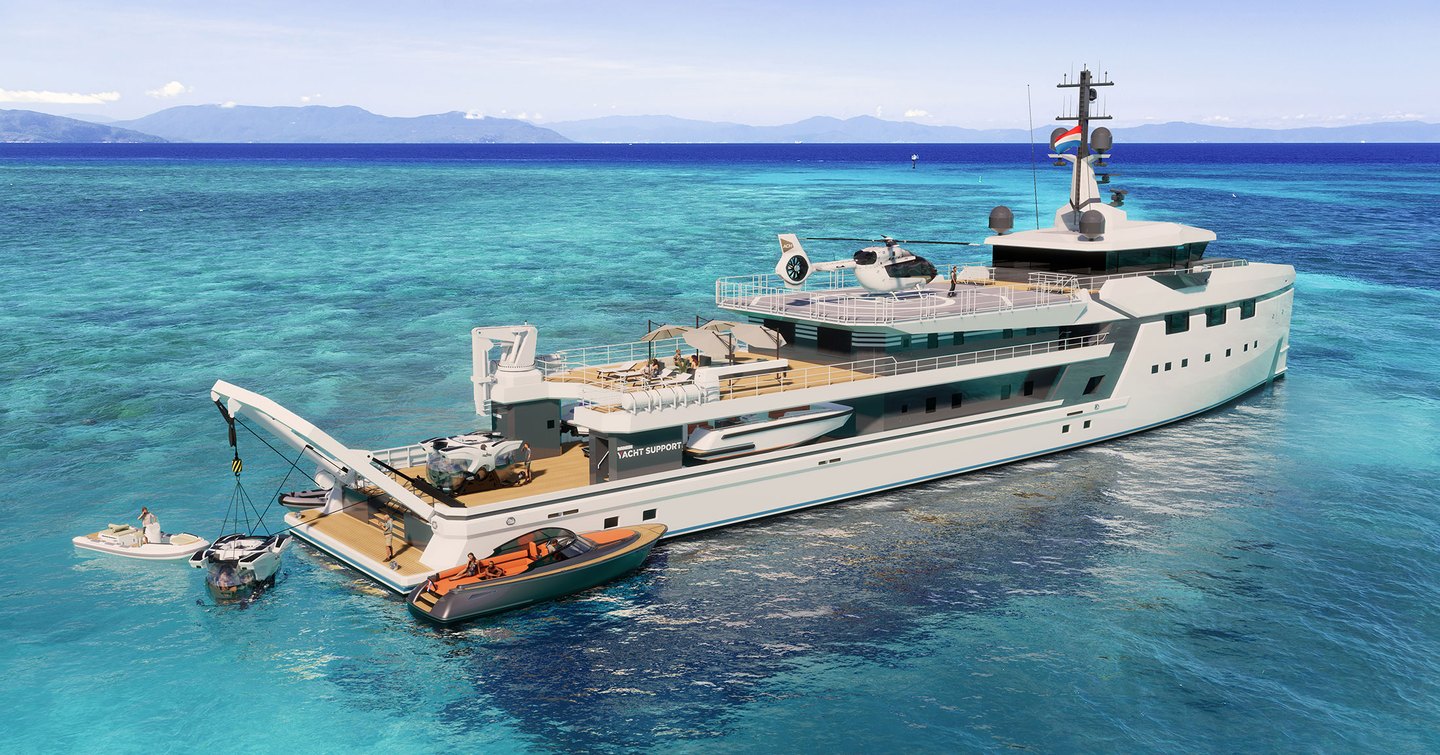
What Is an Expedition Support Vessel and What Makes It Unique?
Thinking of exploring the Arctic, remote islands, or uncharted waters? That’s where expedition support vessels come in — purpose-built ships designed to accompany or operate alongside superyachts during adventurous, long-range missions.
Expedition support vessels are far more than floating garages. They're self-reliant platforms equipped for polar navigation, scientific operations, and extended autonomy in some of the world’s most extreme environments.
With ice-rated hulls, satellite communication systems, and emergency medical capabilities, expedition support vessels allow explorers, scientists, and yacht owners to venture confidently into the unknown. From conducting marine research to providing backup power and provisioning for isolated anchorages, these vessels combine functionality with cutting-edge sustainability systems — including solar panels, waste treatment, and eco-monitoring gear.
Expedition Support Vessels: Purpose and Supported Mission Types
| Expedition Type | Purpose of Support Vessel |
|---|---|
| Arctic & Antarctic Exploration | - Ice-strengthened hull for polar navigation - Cold-weather crew housing - Support for climate research |
| Remote Island Expeditions | - Stores food, water, and fuel for isolation - Carries landing crafts and beach setups - Ensures safety and backup logistics |
| Scientific Research Missions | - Onboard laboratories and data collection - Accommodates research teams - Supports marine and environmental studies |
| Emergency & Evacuation Support | - Medical facilities and trauma rooms - Satellite comms and rapid response gear - Helicopter landing zones |
| Eco-Conscious Voyages | - Water purification and waste systems - Solar power integration - Environmental monitoring tools |
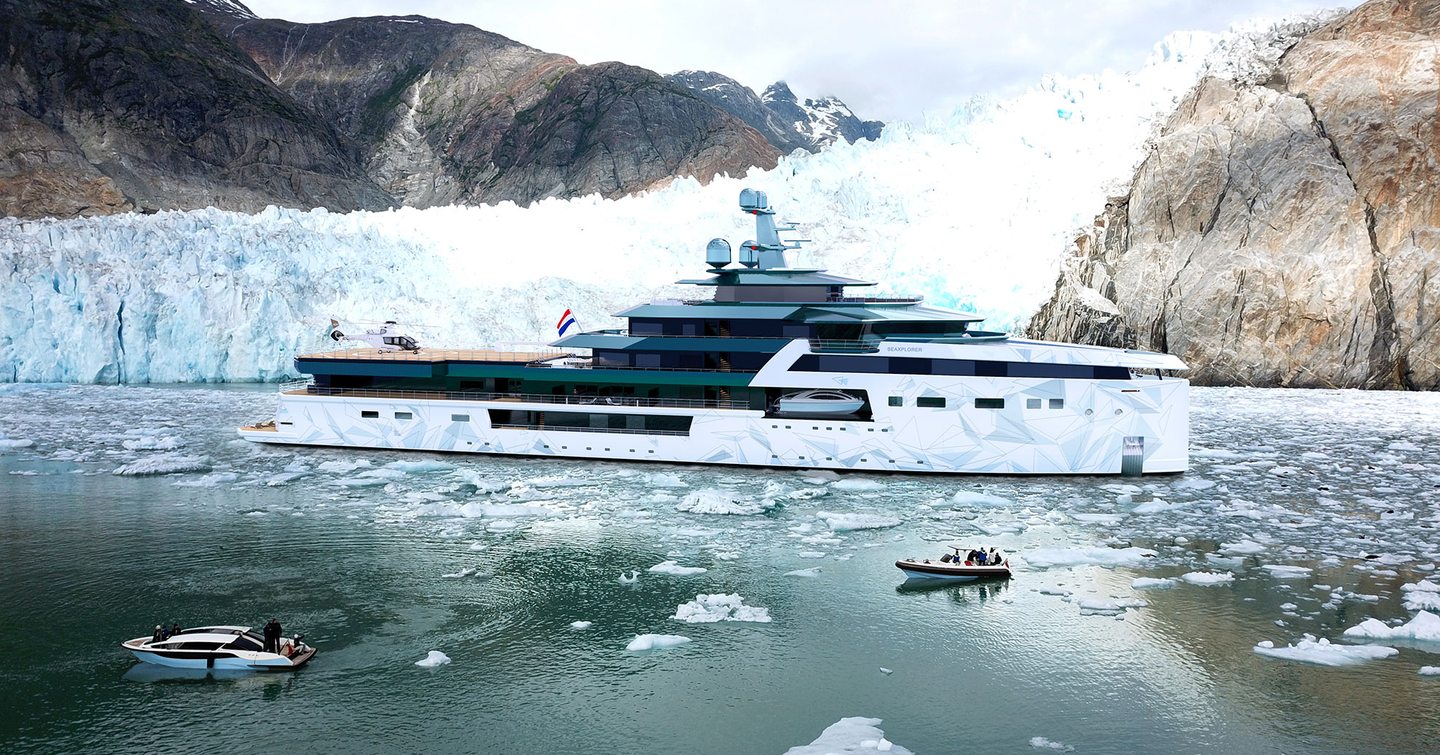
10 Largest Yacht Support Vessels in the World
Yacht support vessels are as floating extensions of luxury yachts, providing additional storage, transportation, and operational support that would be impossible or impractical to accommodate on the primary yacht. Let's take a look at some of the most notable and largest support vessels out there.
1. Garçon (85 meters / 279 feet)
Owner: Private Built: 2021 Shipyard: Damen Yachting Key Features: The world's largest yacht support vessel, Garçon features a helicopter hangar, submarine bay, and extensive tender storage. Originally designed as an offshore vessel, it was converted to support luxury yachting operations. You can see this beautiful and powerful vessel above.
World's Largest Support Vessels
Garcon
67m Damen Yachting 2012
World's Largest Support Vessels
Hodor
66m Astilleros Armon 2019
Hodor is a 66-meter support vessel to Feadship superyacht Lonia. With a sharp grey hull and bold orange accents she is evidence of a stylish and practical design. Built by Incat Crowther, it’s packed with gear for adventure—she holds a 56-foot speedboat, Jet Skis, quad bikes, and even a submarine.
The catamaran design makes her incredibly stable, with plenty of room for toys and tenders, including a helicopter on its dedicated pad. Inside, there’s a cozy lounge featuring Moorish-inspired Corian panels and a fully stocked bar, perfect for a quick recharge. Hodor is less about backup and more about elevating the fun of Lonia’s adventures.
World's Biggest Support Vessels
Umbra
58m Damen Yachting 2009 (2017)
Umbra, a striking 63-meter (207-foot) support vessel built by Damen Yachting in 2020, combines rugged functionality with sleek design. Privately owned, she’s equipped for helicopter operations, submarine deployment, and carries specialized storage for high-end yacht toys — all wrapped in a bold, sleek exterior that makes her as stealthy as she is capable.
World's Biggest Support Vessels
Wayfinder
68m Astilleros Armon 2021
Wayfinder is a 55-meter (180-foot) yacht support vessel built by Damen Shipyards in 2019 for a private owner. Designed to enhance long-range superyacht expeditions, she functions as a mobile logistics hub, featuring a certified helicopter deck, expansive tender storage, and facilities for carrying critical supplies and crew. Purpose-built for versatility, Wayfinder plays a crucial behind-the-scenes role in supporting luxurious adventures at sea.
World's Largest Support Vessels
Jasmine
37m RMK Yachts 2003
The 36.84-meter expedition yacht Jasmine, delivered in 2003 by RMK Marine, exemplifies robust design and long-range capability. Originally known as Jasmin, this steel-hulled vessel features both interior and exterior styling crafted by RMK Marine's in-house design team.
Built to Lloyd's Register classification, Jasmine boasts a substantial fuel capacity of 71,110 liters, granting her an impressive range of 5,182 nautical miles at a cruising speed of 11 knots . This endurance makes her well-suited for extended voyages and exploration. Accommodating up to 10 guests and supported by a crew of 8, Jasmine offers a comfortable and capable platform for adventure on the high seas.Yacht Charter Fleet
While not a traditional support vessel, Jasmine's expedition-ready features and substantial storage capacities enable her to function effectively in a support role, carrying additional equipment and provisions for extended journeys.
World's Largest Support Vessels
Intrepid
69m Damen Yachting 2016
The 69.15-meter support vessel Intrepid, built by Damen Yachting in 2016, serves as the dedicated companion to the superyacht Infinity. Commissioned by American billionaire Eric Smidt, Intrepid exemplifies the evolution of Damen's Sea Axe series, featuring a sleek design and advanced capabilities.
A standout feature is her innovative aft helideck, which opens to reveal a concealed hangar below deck, providing secure storage and maintenance facilities for helicopters.
Beyond aviation support, Intrepid boasts a fully equipped dive center, 250 square meters of deck space for tenders and toys, and 110 square meters of below-deck storage. With accommodations for up to 21 crew members, she ensures seamless operations alongside her mothership.
Powered by four MTU engines, Intrepid achieves a top speed of 20 knots and offers a range of 4,500 nautical miles, making her a formidable asset for extended voyages. Valued at approximately $40 million, Intrepid underscores the growing trend of specialized support vessels enhancing the capabilities and luxury of modern superyachting.
Gene Chaser
56m Damen Yachting 2020
The 55.5-meter support vessel Gene Chaser, built by Damen Yachting in 2020, is a pioneering fusion of maritime engineering and scientific innovation. Commissioned by Dr. Jonathan Rothberg, a renowned geneticist and biotech entrepreneur, Gene Chaser serves as a dedicated research platform complementing his primary yacht, Gene Machine. Originally launched as Blue Ocean, the vessel underwent a significant transformation to become a state-of-the-art floating laboratory.
Gene Chaser is equipped with advanced facilities, including wet and dry laboratories, 3D printing capabilities, and a suite of rapid prototyping tools like CNC machines and laser cutters. These features enable onboard scientific research and development, allowing Dr. Rothberg and his team to conduct cutting-edge experiments at sea. The vessel also houses a portable MRI machine and high-power computational infrastructure, facilitating complex data analysis in real-time.
Beyond its scientific prowess, Gene Chaser offers accommodations for up to eight guests, along with facilities for four full-time scientists and a crew of seven. The main deck features a 225 square-meter area equipped with a 13-tonne capacity crane, suitable for deploying submersibles, tenders, and other mission-specific equipment. Additionally, the vessel includes a hangar for vehicles and a dive center, enhancing its versatility for various expeditions.
With a top speed of 20 knots and a cruising range of 5,000 nautical miles, Gene Chaser is designed for extended missions in remote locations. Its Damen Sea Axe hull ensures excellent sea-keeping capabilities, crucial for the varied operations it supports.
In essence, Gene Chaser exemplifies how purpose-built support vessels can extend the capabilities of primary yachts, serving as independent platforms for scientific discovery and innovation.
World's Largest Support Vessels
Olivia O
89m Ulstein Verft 2020
The ultimate expedition support vessel, 88.5-meter Olivia O, delivered in 2020 by Norwegian shipyard Ulstein Verft, stands as a testament to innovative maritime engineering and luxury. Commissioned by Israeli billionaire Eyal Ofer, this vessel is notable for being the first private yacht to feature Ulstein's distinctive X-BOW® design, which enhances seakeeping and fuel efficiency by reducing pitching in rough seas.
Designed by Espen Øino, Olivia O's exterior showcases a reverse bow and a high, forward-placed bridge, contributing to its unique silhouette and functional performance. The yacht's steel hull and aluminum superstructure house a volume of 4,989 gross tons, providing ample space across five decks. Amenities include a 10-meter swimming pool, a commercially certified helipad, a full-beam tender garage, a cinema, a gym, and a spa, catering to both adventure and relaxation.
The interior, crafted by Droulers Architecture, reflects a rationalist style with industrial and oriental influences. Materials such as various woods, metals, and terrazzo-style resin are used to create a sophisticated yet functional environment. Olivia O accommodates up to 20 guests in eight cabins and supports a crew of 30, ensuring a high level of service.
Powered by twin Caterpillar 3516C-HD diesel engines, Olivia O achieves a cruising speed of 14 knots and a top speed of 16.5 knots, making her well-suited for long-range expeditions.
Support Vessel Classification by Size and Capability
| Category | Size Range | Key Characteristics | Typical Functions | Estimated Cost Range (USD) |
|---|---|---|---|---|
| Small Support Vessels | 20–40 meters | - Focused on specific tasks - Limited crew space - Shorter operational range - Lower cargo capacity |
- Tender transport and storage - Day-use helicopter ops - Dive support - Shore-based logistics |
$5–15 million |
| Medium Support Vessels | 40–60 meters | - Multi-purpose functions - Extended voyage range - Moderate crew housing - Balanced cargo capacity |
- Heli & sub support - Long-range tender ops - Onboard workshops - Expeditionary backup |
$15–40 million |
| Large Support Vessels | 60+ meters | - Global operational reach - Full crew complement - Max storage and equipment - Comprehensive support systems |
- Full expedition support - Multiple helicopter zones - Advanced submarine launch - Yacht-wide logistics hub |
$40–100+ million |
What Are Specialized Yacht Support Vessels and How Do They Work?
Searching for types of yacht support vessels beyond tenders and helicopters? Specialized support vessels are purpose-built ships designed to enhance superyacht capabilities by offering scientific, entertainment, security, or medical support functions during offshore or long-range operations.
Specialized support vessels extend the mission profile of their motherships and enable owners to conduct exploration, host events, protect assets, or provide emergency care — all from the water.
For example, research support vessels are equipped with marine biology labs, sonar systems, and environmental monitoring tools — allowing private owners or scientific partners to conduct underwater archaeology, climate studies, or oceanographic surveys. These vessels often resemble compact research stations at sea and are popular among owners passionate about marine conservation WMO, 2022.
On the luxury end of the spectrum, entertainment support vessels act as floating resorts — complete with beach clubs, water sports gear, spa treatments, and additional guest accommodations. These are increasingly in demand for event charters, overflow guest housing, and high-end wellness experiences on the water Boat International, 2023.
For high-security missions, security support vessels are equipped with surveillance tech, secure comms, and personnel quarters. Often used in piracy-prone regions or VIP protection, they function like mobile maritime security outposts — a critical layer for high-risk itineraries Maritime Executive, 2021.
Lastly, medical support vessels feature fully equipped mobile hospitals, including surgical suites and heli-evac capabilities. These are vital for yachts exploring remote regions where emergency evacuation or onboard medical care might otherwise be hours — or days — away.
Specialized Support Vessel Types and Their Functions
| Vessel Type | Primary Purpose | Key Features | Typical Applications |
|---|---|---|---|
| Research Support Vessel | Scientific exploration and conservation | - Marine biology labs - Geological sampling tools - Environmental monitoring systems |
- Ocean research - Underwater archaeology - Climate data collection |
| Entertainment Support Vessel | Enhance guest recreation and luxury experiences | - Beach clubs - Water sports zones - Guest overflow cabins |
- Events and parties - Water sports instruction - Spa treatments onboard |
| Security Support Vessel | Protect VIP guests and high-value assets | - Surveillance systems - Defensive gear - Emergency response equipment |
- High-risk region cruising - Piracy deterrence - Close security operations |
| Medical Support Vessel | Provide advanced medical care offshore | - Onboard hospitals - Surgical facilities - Helicopter medevac systems |
- Remote expeditions - High-risk sports/activities - Emergency surgeries or evacuations |
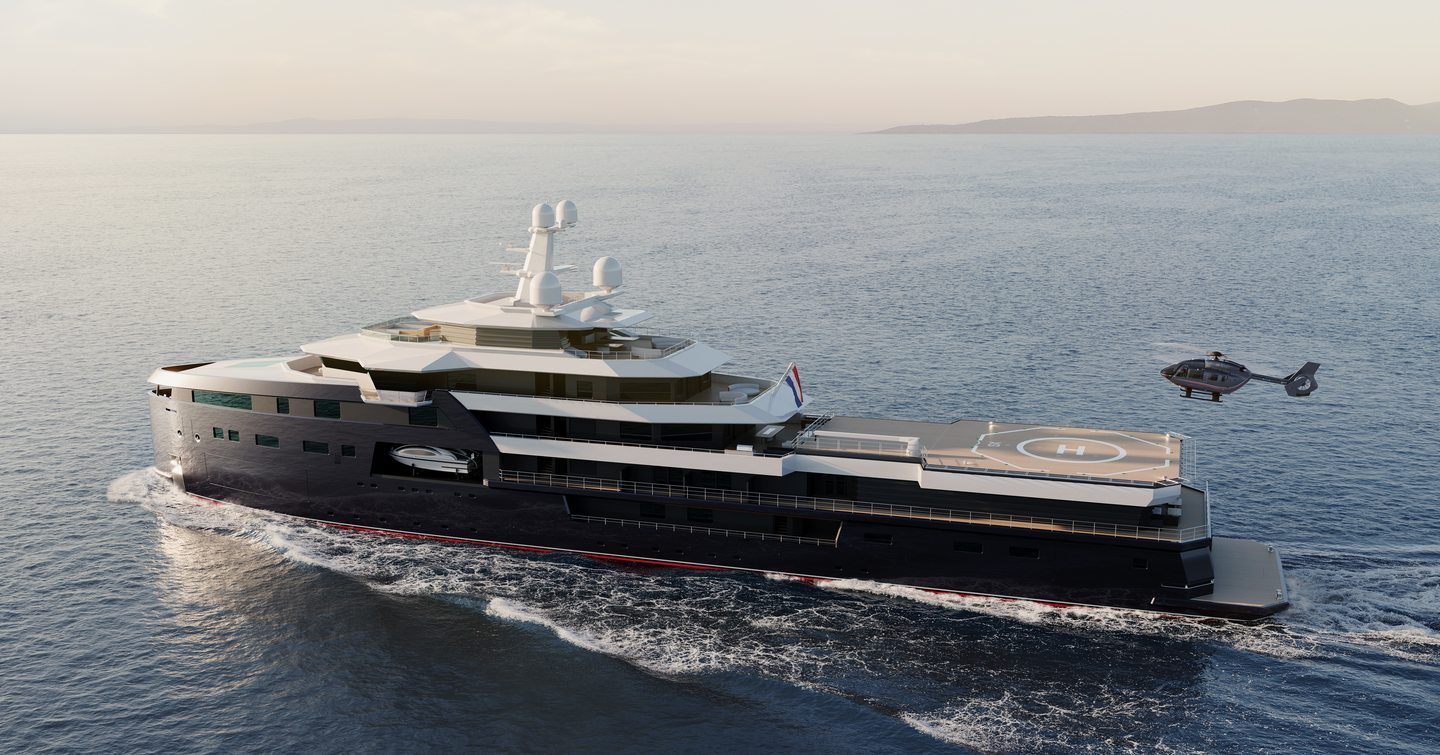
Construction and Design Considerations for Yacht Support Vessels
What makes a support vessel seaworthy, efficient, and future-ready? The construction and design of a yacht support vessel involves careful planning across hull shape, propulsion system, and onboard operational equipment. These choices directly impact the vessel’s speed, endurance, stability, and environmental footprint. In this section, we break down the most common hull designs, propulsion types, and essential onboard systems that define modern support vessels.
Support Vessel Hull Design Types Explained
Choosing the right hull shape is foundational to how a support vessel performs in real-world conditions — especially when navigating open seas or supporting large-scale yacht logistics.
Displacement Hulls
- Provide exceptional seakeeping, especially in rough waters
- Highly fuel-efficient at low to medium speeds, ideal for long-range operations
- Offer superior stability for helicopter landings and cargo transfer
- Commonly used in large support vessels (60+ meters)
Semi-Displacement Hulls
- Balance moderate speed with operational efficiency
- Perform well in a variety of sea states
- Suitable for mid-sized support yachts in the 40–60 meter range
- Highly versatile across support roles — from tenders to expedition operations
Planing Hulls
- Optimized for high-speed operation and shorter distances
- Less efficient in fuel consumption, especially at high speeds
- Best for compact, fast-deployment support vessels (under 40 meters)
- Ideal for day missions or chase boats
Propulsion Systems in Support Vessels
What engines power these vessels — and how is sustainability influencing modern design?
Diesel Engines
- The standard propulsion choice across all vessel sizes
- Known for proven reliability and widespread availability
- Offers good fuel efficiency for continuous operation
Hybrid Propulsion Systems
- Combine diesel engines and electric motors
- Deliver lower emissions and improved fuel economy
- Offer quiet operation, useful in sensitive ecological zones
- Growing in popularity for owners seeking eco-conscious performance
Alternative Fuel Technologies
- Emerging options include hydrogen fuel cells, methanol, and biofuels
- Designed to meet evolving IMO emissions regulations
- Ideal for future-proofing vessels and reducing carbon footprint
- Currently in experimental or limited deployment stages
Key Operational Systems Onboard Support Vessels
Support vessels require highly specialized onboard systems to perform logistics, communications, and life support functions during extended missions.
Navigation and Communication
- Advanced GPS and radar integration for real-time positioning
- Satellite internet and comms for offshore connectivity
- Weather routing systems to optimize route safety and fuel use
- Redundant emergency communication systems
Cargo Handling Systems
- Deck cranes and boom lifts for launching heavy tenders or subs
- Conveyor or roller systems for equipment movement
- Specialized cargo storage (e.g., dive gear, fuel pods, containers)
- Tailored loading and unloading platforms
Life Support Infrastructure
- Freshwater generation via reverse osmosis systems
- Advanced waste treatment and greywater management
- Climate-controlled environments for crew and sensitive equipment
- Onboard emergency life support systems, including oxygen and fire suppression
Industry Insight and Future Design Trends
Leading shipyards such as Damen Yachting, Ulstein Verft, and Incat Crowther are investing in eco-efficient designs, hybrid propulsion, and multi-role functionality to meet the rising demand for expedition-class support vessels.
With increasing interest from science-led owners, charter fleets, and remote-exploration programs, the future of yacht support vessel construction is trending toward modular systems, green propulsion, and AI-assisted onboard operations.
Regulatory and Compliance Considerations for Yacht Support Vessels
What maritime regulations do yacht support vessels need to follow? Whether serving as tenders, helicopter platforms, or expedition bases, yacht support vessels must adhere to a complex framework of international maritime regulations and classification standards. These rules ensure the safety, environmental responsibility, and operational reliability of every vessel navigating global waters.
Here’s a breakdown of the three key international conventions most relevant to support vessels, plus an overview of how classification societies help verify and enforce these standards.
Key International Maritime Regulations
SOLAS – Safety of Life at Sea
The SOLAS Convention, overseen by the International Maritime Organization (IMO), sets global standards to ensure the safety of vessels and all persons onboard.
Why it matters for support vessels:
- Must be equipped with lifesaving gear, including life rafts and emergency beacons
- Require defined emergency evacuation procedures
- Must feature approved radio and communication systems
- Construction must meet fire safety and structural regulations
Do yacht support vessels need to meet SOLAS requirements? Yes — especially those carrying passengers, crew, or operating in international waters.
MARPOL – Marine Pollution Prevention
The MARPOL Convention focuses on protecting the marine environment by regulating pollution from ships.
Support vessel requirements include:
- Strict control over wastewater and garbage discharge
- Use of low-sulfur or compliant fuel where required
- Implementation of emission control systems (especially near coastlines)
- Equipment for oil spill prevention and fuel containment
What emissions standards apply to yacht support vessels? MARPOL Annex VI outlines limits on NOx, SOx, and greenhouse gas emissions.
MLC – Maritime Labour Convention
The MLC ensures fair working and living conditions for all crew members aboard commercial vessels.
For support yachts, this includes:
- Adequate crew accommodations and rest areas
- Proper contracts and employment protections
- Access to medical care and safety training
- Defined working hours and rest periods
Even though some privately owned vessels fall into gray areas, charter support vessels or commercially operated ships are fully subject to MLC enforcement.
Classification Societies: Who Verifies Compliance?
In addition to international treaties, most yacht support vessels are certified by recognized classification societies. These organizations assess whether a vessel meets rigorous structural, operational, and environmental benchmarks.
Lloyd’s Register (UK)
- Verifies structural integrity and hull design
- Approves emergency and safety systems
- Audits operational readiness and redundancy systems
- Includes environmental impact certification
DNV GL (Norway)
- Focuses on technical design validation
- Provides safety management system audits
- Ensures compliance with international emission laws
- Known for work in polar and expedition vessel certification
ABS – American Bureau of Shipping
- Offers oversight during vessel construction
- Certifies safety and environmental systems
- Establishes and enforces U.S.-based technical standards
- Frequently chosen for vessels registered under U.S. flags
Why Compliance Matters
For anyone searching “Do support vessels need to be class certified?” or “What safety rules apply to yacht support ships?” — the short answer is yes, and the scope of these rules depends on size, usage, and flag state.
Failing to meet compliance can result in:
- Legal detainment at port
- Insurance invalidation
- Safety risks for crew and guests
- Environmental penalties
Yacht Support Vessel ROI & Economic Considerations
| Category | Key Factors | Description |
|---|---|---|
| Capital Costs | - Purchase Price - Financing Requirements - Insurance - Registration |
Upfront expenses including vessel acquisition, legal registration, maritime insurance policies, and interest on financing if applicable. |
| Operating Costs | - Fuel Consumption - Crew Wages - Maintenance - Port Fees |
Recurring monthly and seasonal costs that impact the vessel's cost-efficiency, depending on usage and travel routes. |
| Return on Investment (ROI) | - Charter Revenue - Operational Savings - Enhanced Capabilities - Resale Value |
Revenue potential from commercial chartering, indirect savings by reducing wear on the mothership, improved guest experience, and strong resale demand for versatile support vessels. |
Final Thoughts
Yacht support vessels are growing in popularity. From basic shadow vessels providing logistics support to sophisticated multi-purpose platforms capable of supporting complex expedition operations, yacht support vessels have become essential components of modern superyacht operations.
Choosing the right support vessel types depends on specific operational requirements, budget considerations, and intended use patterns. We hope our guide helps you understand the various types of yacht support vessels and their capabilities is crucial for yacht owners, operators, and industry professionals seeking to optimize their maritime operations and enhance the overall yachting experience.
Ready to take the next step? Explore yacht support vessels for sale and check out explorer yachts for sale as well. Each yacht listing on YachtBuyer platform is carefully vetted for authenticity, build quality, and operational history. Whether you're searching for a new yacht for sale or a used yacht, our platform connects serious buyers with reliable options from established builders. Start your search with confidence—every yacht we feature meets global standards for transparency and accuracy.
